
#AlfaRomeo6C2300
6C 2300 Turismo 7th Series, Gran Turismo, Gran Turismo Pescara.
Period of production 1934-1937
The seventh series of the 6C, which appeared in April 1934, defined the new 6C 2300, even if it seems strange to link this model to the long sequence, the original of which dated to the 6C 1500 Normale of 1927. In effect, the modern vehicle could have seemed the evolution of the 6C 1900 6th Series but there were several technical innovations. It's undeniable that, more than the evolution of the 6C 1900, the introduction of the silent timing chain control, replacing the bevel gear drive, a system that remained unchanged until the post-war period and involved all the 6C 2500 production, characterised the new model as progenitor of a new family. This solution also definitively severed the ideal historic technical link with the P2. The timing system consisted of two overhead camshafts, housed on three supports, because it had been decided that such a tried and tested system should distinguish all Alfa Romeo production. Therefore, 1934 saw the abandoning of engines with a single overhead cam, just as it also saw the end of supercharging. The chassis was conceptually similar to the 1900, still with side and cross members. Although it had been optimised by a general strengthening which introduced box sections, it proved to be a little outdated, particularly because of the front beam axle when independent front suspension was gaining ground. Nevertheless, it was the latest expression of that construction concept and therefore showed good efficiency, especially through a very advanced modification - the modern and very simple rubber silent blocks- replaced the more complex bronze axle bushes which needed frequent greasing. The gears were also a significant innovation with synchromesh on second and third. The bodywork was made directly by Alfa Romeo, which had set up a special department, while an imposing saloon, created by Carrozzeria Castagna of Milan, was sold through the company's commercial network. But it wasn't only Castagna which worked with Alfa Romeo; other leading coachbuilders, particularly Touring, tried the new chassis. The models have the following chassis numbers: 1934 - from 6C 710501 to 6C 710722, all produced only in 1934.
The Gran Turismo version, which immediately followed the Turismo, had better performance and also foresaw the reduction of the wheelbase (2920 mm), proposing once again the dimensions of the 6C 1500 Sport and 6C 1750 Gran Turismo. Except for the reduction in length, the chassis was identical to that of the Turismo model and was not distinguished by particular technical innovations. Elegant, sophisticated and aerodynamic, the standard saloon was produced directly by Alfa Romeo but the design was the result of close co-operation with Carrozzeria Castagna, which kept unchanged the prerogatives which had made it one of the most extraordinary Italian coachbuilders. Carrozzeria Pinin Farina had an interesting cabriolet in its catalogue but Castagna didn't stop at the saloon, attempting the construction of an open four-seater which preserved the mudguards, bonnet and radiator cowling of the Alfa Romeo saloon; perhaps this was one of the first examples in the history of custom-built cars. The great work of preparation was carried out under the direct control of Luigi Bazzi and concerned the increase in the power of the engine. This was obtained with the increase in the compression ratio but it was mainly the reduced weight, compared to the Turismo, which allowed better performance. The preparation was aimed at taking part in the Targa Abruzzi, a 24-hour speed race, of 1934, held in Pescara, and was further developed to take part in the Mille Miglia of the following year. Production was limited to 1934 and the chassis are numbered from 700101 to 700635.
The model 6C 2300 Gran Turismo Pescara also only lived for one year, 1934, and derived from the Gran Turismo which had triumphed in the Targa Abruzzo of 1934. It took the name from the Scuderia Ferrari which enrolled it in the Mille Miglia, held on 14 April 1935, as a Pescara type. The light saloon was entrusted to the team of Franco Cortese and Francesco Severi, about whom there were no doubts after the previous extraordinary performance. There were another three Pescaras at the start - the private 6C 2300 of Catullo Lami from Tuscany, who took the young Pasquino Ermini with him, that of Arturo Mercanti, with his travelling companion Alessandro Gaboardi, and that of Archimede Rosa, who was partnered by the loyal Gianfranco Comotti. Only Lami's vehicle had to withdraw before Rome while Cortese and Severi finished in eighth place overall; Rosa and Comotti, also with the 2300 enrolled by Scuderia Ferrari, finished tenth and Mercanti-Gaboardi were 15th. This was a notable result which confirmed the magnificent qualities of the 6C 2300, considering that Cortese even finished ahead of some 8C 2300s and 8C 2600s and a host of supercharged 6C 1750s. Exactly twelve months after the splendid victory at the Targa Abruzzo of 1934, Scuderia Ferrari had no doubt about presenting the winning pair Franco Cortese-Francesco Severi in a 6C 2300 with light bodywork quite similar to that of the previous year created by Touring, now officially defined Pescara, at the start of the competition in August 1935. The race for Group B vehicles without superchargers was once more dominated by the two fast drivers while the other 6C driven by Archimede Rosa and Gianfranco Comotti, who had had to be happy with tenth place the year before, were placed second overall. In addition, Cortese allowed himself the luxury of considerably raise the record of the previous year, covering 2577 kilometres in the 24 hours, compared to the 2482 of the previous year. Rosa and Comotti covered 2540 kilometres. It should be noted that the fastest lap of the difficult route in Abruzzi was covered by Cortese at an average of 111.695 kph. The Pescaras also obtained excellent results in the 10th Mille Miglia, held on 5 April 1936. The new 2300 B had already been in production for some time but the robust traditional suspension with semi-elliptic springs and rigid axles of the 2300 probably offered greater guarantees. The 6C 2300 Bs finally took part in the Mille Miglia of 1937 but the traditional 2300s behaved honourably and were placed sixth, eighth and eleventh overall with the teams Franco Cortese-Angelo Guatta on board the spider with bodywork by Zagato, Edoardo Teagno-Nando Barbieri in another spider and the Randaccio brothers in the third 2300. One of the last significant results was obtained by the Zagato Spider, driven by Rodolfo Haller and Count Carlo Castelbarco, with the excellent thirteenth place overall in the Mille Miglia of 1938.
6C 2300 B 1st Gran Turismo Series, Pescara, Turismo, Corto, Lungo, Mille Miglia
Periods of production: 1935-1938 6C 2300 B Gran Turismo. 1935-1937 6C 2300 B Pescara. 1936-1937 6C 2300 Turismo. 1938-1939 6C 2300 B Corto. 1938-1939 6C 2300 B Lungo. 1938 - 6C 2300 B Mille Miglia
The feature of the new 6C 2300 B Gran Turismo was a highly sophisticated chassis. It was launched in 1935 and remained in production until 1938, and until 1939 for the Corto and Lungo models; it was then followed by the 6C 2500. It was embellished by four-wheel independent suspension, a rear swing axle and hydraulic brakes. Only the engine stayed almost identical to the preceding model of the previous year but nothing resembled the initial production. The sequence of the series was interrupted, and not accidentally, to re-start with the first series. In 1935, the as yet not completely perfected 6C 2300 B Pescara was considered vulnerable, particularly in the new suspension, for the completion of a competition like the Mille Miglia, part of which was on unsurfaced, bumpy roads. As a result, it was momentarily put to one side in favour of the less refined but more reliable 2300 7th Series fitted with a traditional chassis, beam axles and semi-elliptic springs. The following year, the clamorous success in the 9th edition of the race, with the eighth and tenth places overall, was confirmed by the 6C 2300 with the conventional chassis. In 1937, on 4 and 5 April, the success was repeated again but with the new independent suspension Pescaras with hydraulic brakes. The result obtained with the small car with bodywork by Touring, culminating in the conquest of fourth place overall by the 6C driven by Ercole Boratto, Mussolini's driver. This time, however, he was flanked by the very fast Giambattista Guidotti, the company's chief test driver. The magnificent result gave credit to the 6C 2300 B as an interesting compromise - a competition car with standard features; the subsequent Alfa Romeo propaganda advertised the vehicle as the standard 6C 2300 B Pescara. Count Giovanni Lurani achieved another success at the 1st Circuito dell'Agro Pontino, officially organised by the R.A.C.I. of Rome, held on 2 May 1937. The third important success of the 1937 season came with the Targa Abruzzo, held in the middle of August. Reduced from the previous 24 hours to just six, the 5th Targa Abruzzo was dominated by the 6Cs - Franco Cortese was first overall, Salvi del Pero (a little-known but very good driver) was second and Renato Balestrero third. In subsequent competitions, the Pescara version appeared to vanish from the competitive scene, also because of the official appearance of the Mille Miglia model, although it is almost certain that Pescara models were enrolled in competitions with the name Mille Miglia. As there are no photographs, the most reliable sources are, nevertheless, discordant in the definition of the two models as Pescara or Mille Miglia and this makes correct distinction difficult: At the time, the sports press, just like Alfa Romeo, didn't worry about the exact name but tended to use particularly obscure terminology, only indicating the engine capacity. The 6C 2300 B Pescara, with greater power than the previous 6C 2300 7th Series version, was prepared with the clear intention of making it a competition car for the 2 litres plus classes in the vehicles withoutsupercharger category. Only one year before, Alfa Romeo was still tied to traditional solutions, strictly attributable to Vittorio Jano's first project, the 6C 1500; in just a few months, a modern chassis not too distant, in terms of design, from the contemporary single-seater 8C 1935 was created. The independent suspension system and the hydraulic brakes were identical to the 6C 2300 B Gran Turismo but the increase in the compression ratio and general preparation had raised the power to 105 CV at 4800 rpm compared to the 4400 of the less extreme version. The maximum speed, which sometimes exceeded 145 kph, proved to be very interesting. The vehicles set up to take part in competitions were taken from the normal production of the model and had the following chassis numbers: 1935 - from 813801 to 813804; 1936 - from 813805 to 813809; 1937 - from 813810 to 813915.
The 6C 2300 B Turismo was launched in 1936. It was clearly a vehicle without competitive claims but suitable for accommodating voluminous bodywork due to the wheelbase of 3250 mm. It remained in production the following year as well and met with a certain interest, particularly in the configuration with Alfa Romeo bodywork. In 1938, the decision was taken to offer an alternative with two chassis named 6C 2300 B Corto and Lungo (Short and Long). Both were supplied with Alfa Romeo bodywork, the former elegant and the latter considerably larger, a saloon car with 4/6 seats. The external coachbuilders were also able to develop their inspiration, particularly Pinin Farina, who created magnificent cabriolet versions on both the short and long chassis, not disdaining, however, the design of beautiful 4-seater coupés. The 6C 2300 B Mille Miglia was also presented in 1938 and only produced that year. This was the last of the extensive series of 2300 B. In effect, it was the chassis of the 6C 2300 Pescara increased by 10 CV and almost 30 kilometres in speed thus reaching the maximum speed of 170 kph.
Although the official presentation of the vehicle was in 1938, the sports activity of the 2300 B Mille Miglia started the previous year with magnificent results in the Mille Miglia. Ferruccio Crivellari and Pietro Ferraro achieved a splendid result with seventh place in the general classification, just as the ninth place of Francesco Severi and Ferdinando Righetti's vehicle was also important. The bodywork of this 6C was very elegant and sophisticated, created by Ghia to Count Mario Revelli di Beaumont's design. A second vehicle with bodywork by Ghia also took part, entrusted to the team of Eugenio Siena and Emilio Villoresi, but it had to withdraw before Rome. The chassis were numbered as follows: 1938 - from 815001 to 815101, and the engines from 823916 to 823968 and from 824001 to 824051.
In 1939, the 6C 2500 Super Sport, also defined 256, was launched. This vehicle had a chassis that was almost the same (except for the modest increase in engine capacity) but the performance was considerably improved. The sports career of the 6C 2300 seemed to have ended but the new 256 were only ready for the Mille Miglia of 1940, held on the Brescia-Cremona-Mantua circuit. So, in 1939, the 6C 2300 B Mille Miglia still had the chance to show well with Cortese and Fumagalli's ninth place overall and the 15th position of Rangoni and Cornia.
We'll tell the story of this model on the occasion of its anniversary or when it will reach a sufficient number of cars.
If you would like to share your knowledge and archive, click on the banner JOIN THE LAB - HELP US TO IMPROVE & COMPLETE THE INFORMATION.
The census of all the cars related to this topic is in progress.
CARS (14)
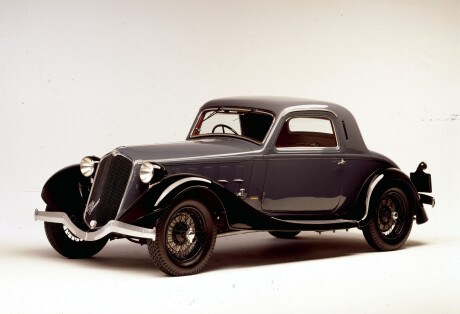
1934 Alfa Romeo 6C 2300 Coupé Aerodinamico
- Coachbuilder: Carrozzeria Castagna Milano
- Chassis n°: 700500
- Engine n°: no number
MUSEO ALFA ROMEO (IT)
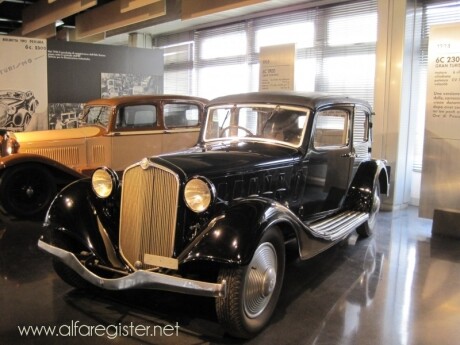
1934 Alfa Romeo 6C 2300 Gran Turismo
- Coachbuilder: Carrozzeria Touring
- Chassis n°: 700188
- Engine n°: no number
MUSEO ALFA ROMEO (IT)

1934 Alfa Romeo 6C 2300 Gran Turismo
- Coachbuilder: Carrozzeria Alfa
- Chassis n°: 700447
- Engine n°: #700447
Private collection
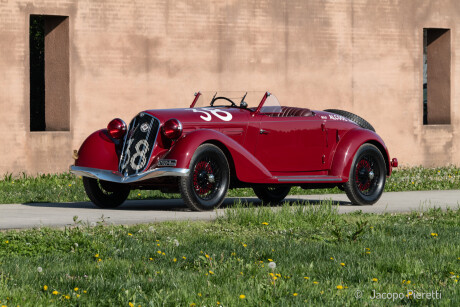
1935 Alfa Romeo 6C 2300 Gran Turismo "Pescara" Spider
- Coachbuilder: Carrozzeria Touring
- Chassis n°: 6C 700635
- Engine n°: 6C 700635
Private collection
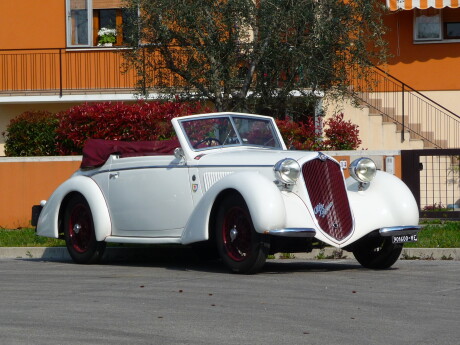
1937 Alfa Romeo 6C 2300 B Gran Turismo
- Coachbuilder: Gläser-Karosserie
- Chassis n°: 813079
- Engine n°: 823168
Private collection
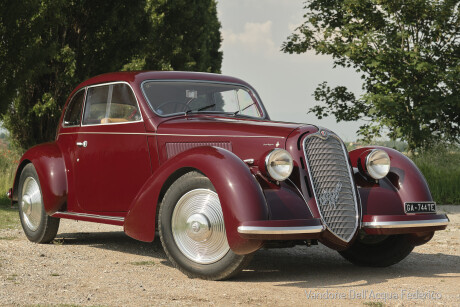
1937 Alfa Romeo 6C 2300 B Mille Miglia (I serie)
- Coachbuilder: Carrozzeria Touring
- Chassis n°: 813915
- Engine n°: 824036
Private collection

1938 Alfa Romeo 6C 2300 B Lungo
- Coachbuilder: Carrozzeria Alfa
- Chassis n°: 814279
- Engine n°: T 823352
Corrado Lopresto (IT)
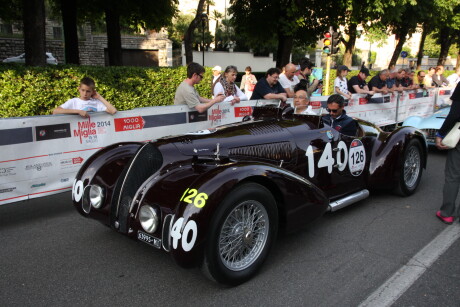
1938 Alfa Romeo 6C 2300 B Mille Miglia Spyder
- Coachbuilder: Carrozzeria Touring
- Chassis n°: 815001
- Engine n°: 925041
Private collection
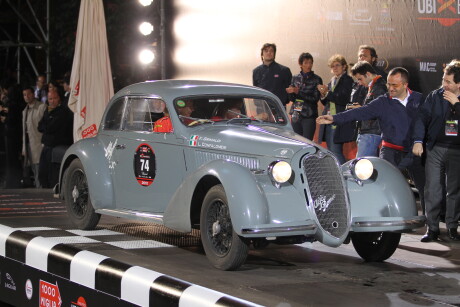
1938 Alfa Romeo 6C 2300 B Mille Miglia
- Coachbuilder: Carrozzeria Touring
- Chassis n°: 815021
- Engine n°: 823938
MUSEO ALFA ROMEO (IT)
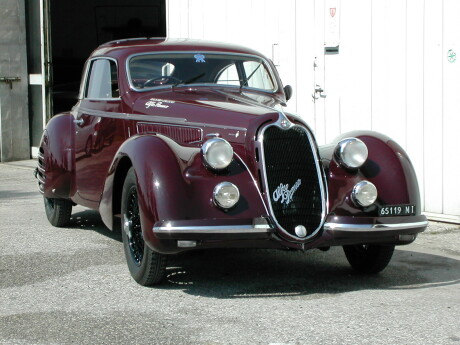
1938 Alfa Romeo 6C 2300 B Mille Miglia
- Coachbuilder: Carrozzeria Touring
- Chassis n°: 815035
- Engine n°: 823956
Private collection
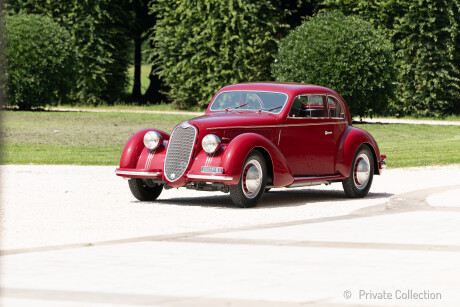
1938 Alfa Romeo 6C 2300 B Mille Miglia
- Coachbuilder: Carrozzeria Touring
- Chassis n°: 815074
- Engine n°: MM 824029
Private collection

1942 Alfa Romeo 6C 2500 Super Sport Coupé
- Coachbuilder: Bertone
- Chassis n°: 915516
- Engine n°: SS923616
Corrado Lopresto (IT)
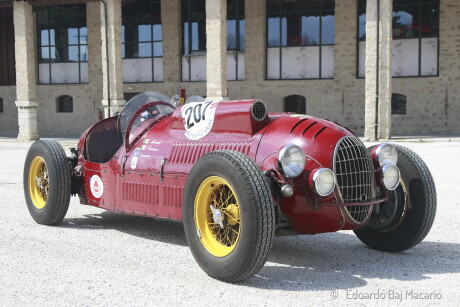
1947 AMP Special
- Coachbuilder: Prete
- Chassis n°: 51509750
- Engine n°: 824046
Private collection
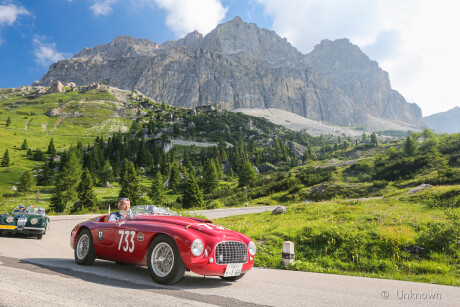
1950 Ferrari 195 S/212 Export
- Coachbuilder: Carrozzeria Touring
- Chassis n°: 0038/M
- Engine n°: M 0038
Private collection